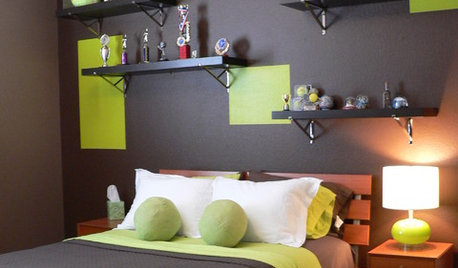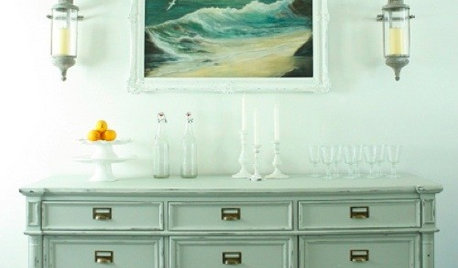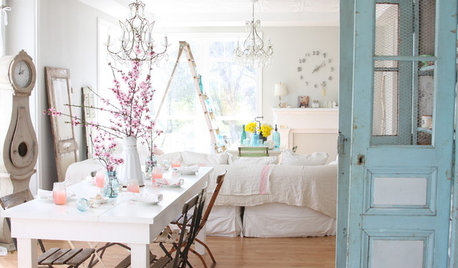Has anyone replaced wooden spindles
edie3
11 years ago
Related Stories

Tennis Anyone? Inspiration from Wimbledon
Add a Little Tennis-Ball Green and Racquets to Your Look
Full Story
MUDROOMSThe Cure for Houzz Envy: Mudroom Touches Anyone Can Do
Make a utilitarian mudroom snazzier and better organized with these cheap and easy ideas
Full Story
BUDGET DECORATINGThe Cure for Houzz Envy: Living Room Touches Anyone Can Do
Spiff up your living room with very little effort or expense, using ideas borrowed from covetable ones
Full Story
KITCHEN DESIGNThe Cure for Houzz Envy: Kitchen Touches Anyone Can Do
Take your kitchen up a notch even if it will never reach top-of-the-line, with these cheap and easy decorating ideas
Full Story
BEDROOMSThe Cure for Houzz Envy: Master Bedroom Touches Anyone Can Do
Make your bedroom a serene dream with easy moves that won’t give your bank account nightmares
Full Story
DECORATING GUIDESThe Cure for Houzz Envy: Dining Room Touches Anyone Can Do
Get a decorator-style dining room on the cheap with inexpensive artwork, secondhand furniture and thoughtful accessories
Full Story
WOODKnotty and Nice: Highly Textured Wood Has a Modern Revival
Whether it's cedar, fir or pine, if a wood has a knot, it's hot
Full Story
REMODELING GUIDESOne Guy Found a $175,000 Comic in His Wall. What Has Your Home Hidden?
Have you found a treasure, large or small, when remodeling your house? We want to see it!
Full Story
COLORS OF THE YEARPantone Has Spoken: Rosy and Serene Are In for 2016
For the first time, the company chooses two hues as co-colors of the year
Full Story
HOUZZ TVHouzz TV: This Dream Midcentury Home in a Forest Even Has Its Own Train
Original wood ceilings, a cool layout and, yes, a quarter-scale train persuaded these homeowners to take a chance on a run-down property
Full Story








weedyacres
kirkhall
Related Professionals
Newington Kitchen & Bathroom Designers · Yorba Linda Kitchen & Bathroom Designers · Broadlands Kitchen & Bathroom Remodelers · Elk Grove Kitchen & Bathroom Remodelers · Independence Kitchen & Bathroom Remodelers · Mansfield Interior Designers & Decorators · Chicago Ridge General Contractors · Medford General Contractors · Melville General Contractors · Mount Laurel General Contractors · Parkville General Contractors · Riverside General Contractors · Rossmoor General Contractors · Seabrook General Contractors · Tabernacle General Contractorsedie3Original Author
kirkhall
weedyacres
kirkhall